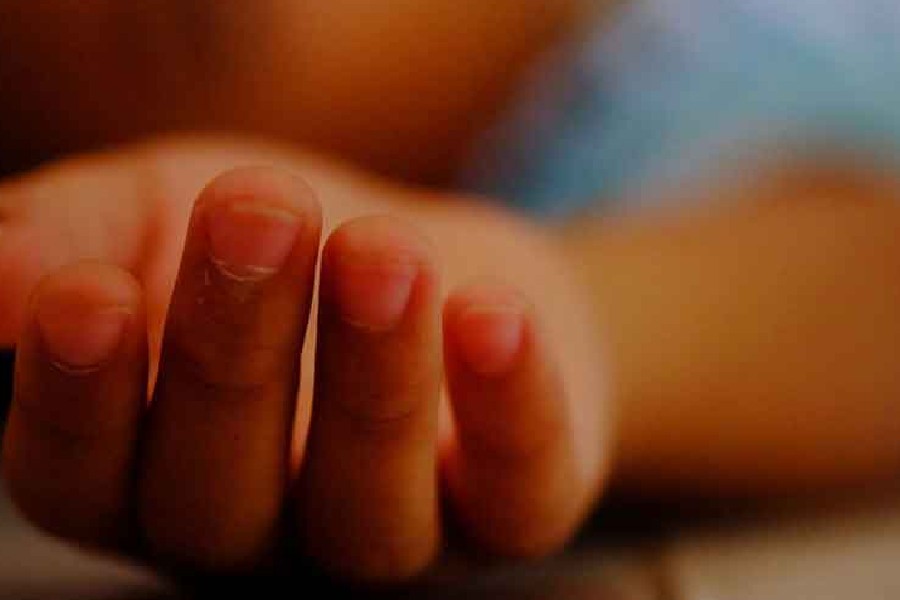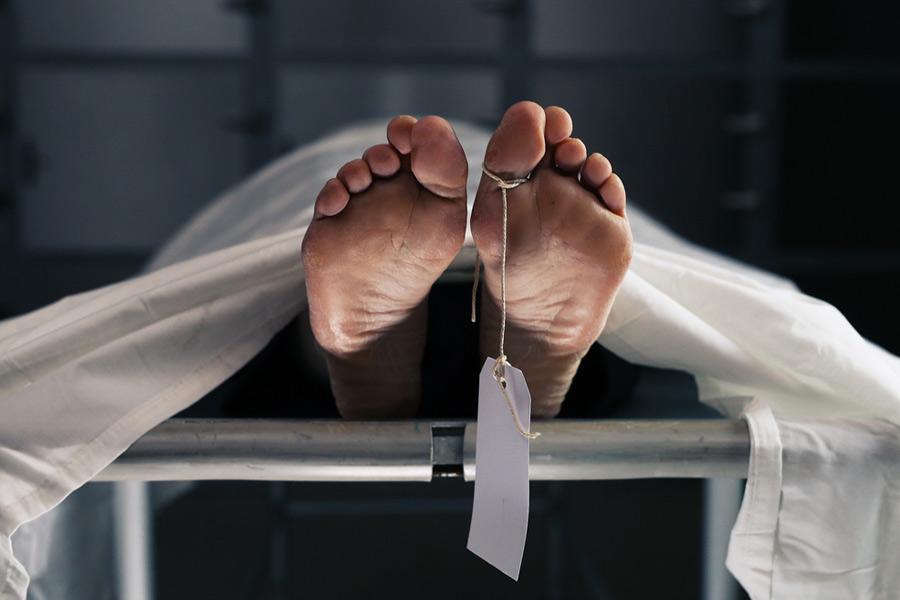
The wandering artiste slips in and out of different looks, but his favoured one is that of the Hindu god, Mahadev. It takes him a good half hour to don the make-up — zinc oxide, Vaseline,
colours — accessorise and change clothes. For the few hours that he plays god, he fasts.
They invariably moved as a pair. The younger of the two wore a toga with a leopard skin pattern and a matted wig. He had a plastic cobra around his neck and a trident in one hand. That would be Dipankar Halder dressed as Mahadev. The older and stockier of the two had his face painted black, a false tongue affixed to the lower lip, a garland of plastic skulls and two wobbly fake arms. He was Kalipada Pal, Dipankar's maternal grandfather, dressed as Ma Kali.
Even a few years ago, you would spot the duo blessing the faithfuls or catching their breath, at a tea shop near Lalbazar, the Kolkata Police Headquarters, or on the steps of the Shiv Temple at Burrabazar. And there were others too like them, bahurupis, who roamed the streets of Calcutta.


Bahurupis are wandering artistes who travel across towns and villages entertaining people.
Folk art researcher and writer of the book Banglar Bahurupi, Aditya Mukhopadhyay, maintains a meticulous head count. There are about 300 bahurupis all over Bengal even today, he will tell you. He knows it from his own research, corroborated by the registry of rural artistes maintained by the West Bengal government.
Mukhopadhyay talks about how television, multiplexes and a mass gadget fixation have denuded the appeal of the bahurupi today.


The passengers of the Tarakeswar-Howrah local seem oblivious to the fact that they have Mahadev in their midst. Some of the youngsters from a passing train jeer at Dipankar, but others don’t bat an eyelid. Dipankar clambers into the vendors’ compartment and, as the train picks up momentum, falls asleep.
He recalls the observations of the British ethnographer and colonial administrator, Herbert Hope Risley, on bahurupis in his book, People of India. Risley, who conducted a study of the tribes, castes and occupations of the Bengal Presidency in the late 19th century, writes: "They often appear in the guise of a decrepit old woman... Another popular role is that of Siv-Gauri which the Bahurupia gets himself up with one side attired as Siv, the other as Gauri, and imitates the different tones of voice, gait, and gestures of the two sexes with so much art as to deceive many of the audience (sic)."
It seems many bahurupis of Bengal, Odisha and Jharkhand trace their origin to hunting tribes, especially pakhmaras or bird hunters who disguised themselves as tigers, bears and langurs. Later, these very people evolved into bahurupis. Mukhopadhyay's research reveals that many a time British administrators and zamindars deployed bahurupis to remote areas for espionage. He says, "They would gather information and get a sense of grievances and possible unrest."


Descendants of many professional bahurupis with the family name "byadh", meaning hunter, can still be found in Birbhum, Hooghly, Burdwan and Murshidabad. But Kalipada and his grandson are from Tarakeswar. Mukhopadhyay, who knows them, says, "Kalipada doesn't belong to any of these tribes. He joined the profession out of passion and to earn a better living." In his initial years, he used to sell snacks in suburban trains. But as bahurupi he made a name. He acted in films, and started to get frequent calls for shows. In time, he turned guru to budding bahurupis, including grandsons Dipankar and Shubhankar.

We set out looking for Kalipada and that is when we learn that he is no more. Died last December after a severe bout of asthma, his daughter Alpana informs The Telegraph over phone. She adds, "But you are welcome to our home and see my father's akhra. Dipu has taken over." And Shubhankar? Fed up with the meagre earnings, he has turned farmhand. Even the state stipend of Rs 1,000 a month for registered artistes, a bid to revive traditional arts, is not enough. "One has to live," he says.
Indeed, before God's sake or art's, for his own.









